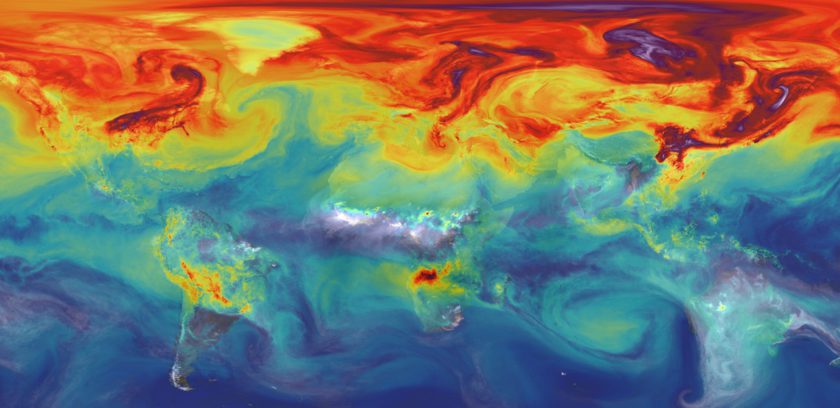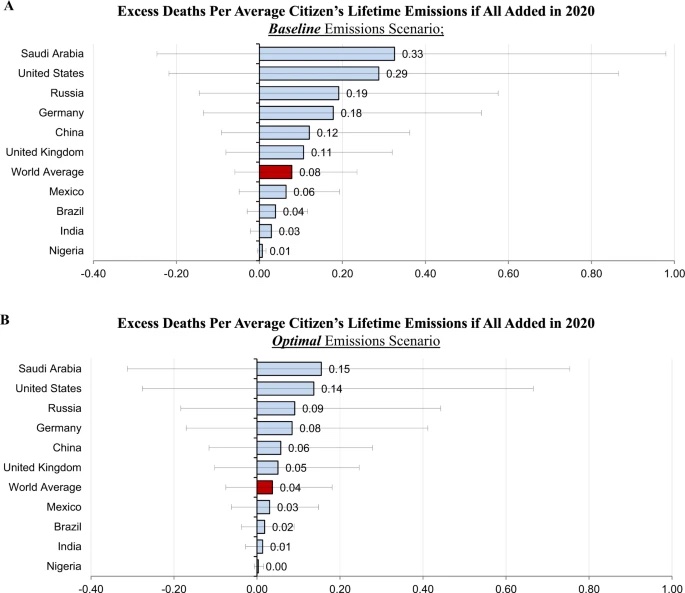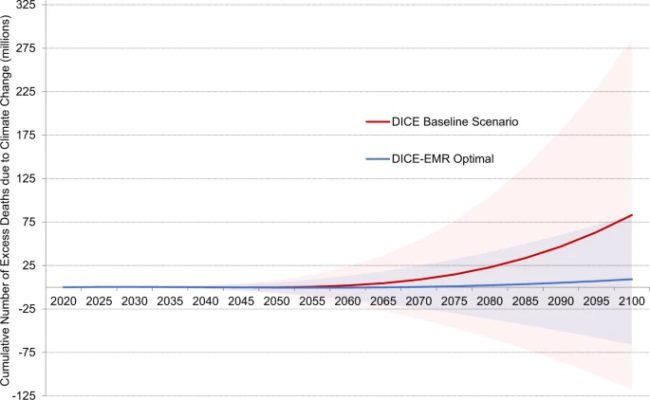
Because of the publication of the IPCC “red alert” report this past week, I feel that it is appropriate to draw your attention to another study that was recently published in nature Communications.
When we think about climate change, we tend to think about the financial impact of our CO2 emissions. What about the human cost, how many lives will our CO2 emissions cost?
There is a recent study that attempts to answer that question.
Study: The mortality cost of carbon
Published July 29, 2021, the study by R. Daniel Bressler, a PhD. candidate at Columbia University’s Earth Institute, attempts to articulate the human cost of CO2.
“Based on the decisions made by individuals, businesses or governments, this tells you how many lives will be lost, or saved,” says Bressler. “It quantifies the mortality impact of those decisions. It brings this question down to a more personal, understandable level.”
Is it truly possible to measure this?
Coming up with evidence-based numbers for this is very challenging. Any result needs to be digested with a pinch of salt. This is because there is no absolute definitive universal number.
Where do you draw the line?
If there is a heat wave you can of course potentially attribute it to climate change. But how much is down to climate change and how much is natural anyway?
What about indirect measurements. The heat causes crop failure and people starve. What about storms and floods? Similar questions abound. It’s a very fuzzy line.
For a study such as this, all you can do is estimate. In this specific case, a scientific paper, you simply can’t exaggerate, and so any estimate needs to be reasonable and cautious.
What exactly is being Measured?
The paper attempts to calculate the number of expected temperature-related excess deaths globally from 2020 to 2100 caused by the emission of one additional metric ton of carbon-dioxide-equivalent emissions in 2020.
What is presented is what is termed the MCC (Mortality Cost of Carbon).
So how does it work. The study does it as follows …
- It estimates the mortality impact of climate change based on several key public-health studies. But …. there is a lot of uncertainty in those studies; so the main findings are based on their central estimates.
- The study accounts only for direct temperature-related mortality, such as heat stroke. It leaves out possible deaths from storms, floods, crop failures, infectious diseases or wars. While all these are predicted consequences of climate change, they are almost impossible to quantify.
To sum all that up, the estimate within the study is most probably an underestimate.
What does the paper conclude?
If emissions continue, then the MCC number is this: 2.26×10-4, or 0.000226 excess deaths this century per metric ton of carbon dioxide emitted beyond the current rate of emissions.
That’s hard to grasp and so it needs to be expressed in a manner that enables us to truly grasp it. For every 4,434 metric tons of CO2 that we add beyond the 2020 rate of emissions, we will kill one person.
4,434 sounds like a lot, but that is the amount of CO2 that 3.5 US citizens will be responsible for in an average lifespan.
The paper lays it out like this …
On a global average, 4,434 tons equals the lifetime emissions of 12.8 people (theoretically killing only 0.08 people per capita). Even in the relatively wealthy United Kingdom, it would take the current emissions of 9.4 citizens to produce the same amount of excess mortality (killing 0.11 per capita). It would take 25.8 Brazilians (killing 0.04 per capita); or 146.2 Nigerians (killing just 0.01 person per capita). A small number of countries come out looking worse than the United States, including oil-intensive Saudi Arabia (killing 0.33 people per capita). Also on that short list: Australia, Qatar, Kuwait and the United Arab Emirates.
In bigger, less personal terms: adding 1 million metric tons to the 2020 baseline emissions would kill 226 people. Those 1 million tons equal the yearly emissions of 216,000 passenger vehicles; or, 115,000 homes; or 35 commercial airliners; or 0.24 coal-fired power plants.)

What does it all really mean?
The point is this. Emitting CO2 has consequences. Rather obviously there are financial consequences (storms, floods, heatwaves). That is something we can all grasp. However, a cost that many are perhaps not so familiar with is that it also results in people dying prematurely.
By 2100 doing nothing about climate change will potentially result in 83 million cumulative excess deaths.
It that realistic?
It probably is for the “Do nothing about Climate Change” option. The study assumes that on our current emissions path, by 2050, average temperatures will surpass 2.1 degrees C (3.8 F) above those of preindustrial times—the largely agreed-upon limit after which the worst consequences of climate change will kick in. After that, things would get much worse quickly, with temperatures reaching 4.1 degrees C (7.4 F) higher by 2100. It is under this scenario that the study forecasts that climate change would cause 83 million excess deaths by 2100.
Since temperatures start hitting truly serious levels by 2050 under this scenario, most of the premature deaths would take place after that. The study does not explicitly look at geographic distribution, but the study author, Bressler, advises that most of the deaths would be in regions that are already the hottest and poorest: Africa, the Mideast and South Asia.

However … if we take meaningful action to avert the worst consequences of climate change and managed to keep global warming restricted to just 2.4 degrees C by 2100 then seventy-four million of these deaths can be averted and only 9 million die as a consequence.
As a species we now face choices and the moment of decision is now. COP26 is only a few weeks away.
Data availability
The data used to produce the analysis described in the paper and its supplementary materials is available in the following repository: https://www.openicpsr.org/openicpsr/workspace?goToPath=/openicpsr/138881&goToLevel=project under a creative commons 4.0 license.
Code availability
The code used to produce the analysis described in the paper and its supplementary materials, including the DICE-EMR model and the mortality damage function curve fitting, is available in the following repository: https://www.openicpsr.org/openicpsr/workspace?goToPath=/openicpsr/138881&goToLevel=project under a creative commons 4.0 license. The DICE-EMR model is also available on R. Daniel Bressler’s personal website: https://rdanielbressler.com/the-diceemr-model.
Further Reading
The published paper within Nature Communications (available Open Access) : The mortality cost of carbon
There is also an article within Scientific American that describes this work. It is titled “Act on Climate Emergency Now to Prevent Millions of Deaths, Study Shows”
